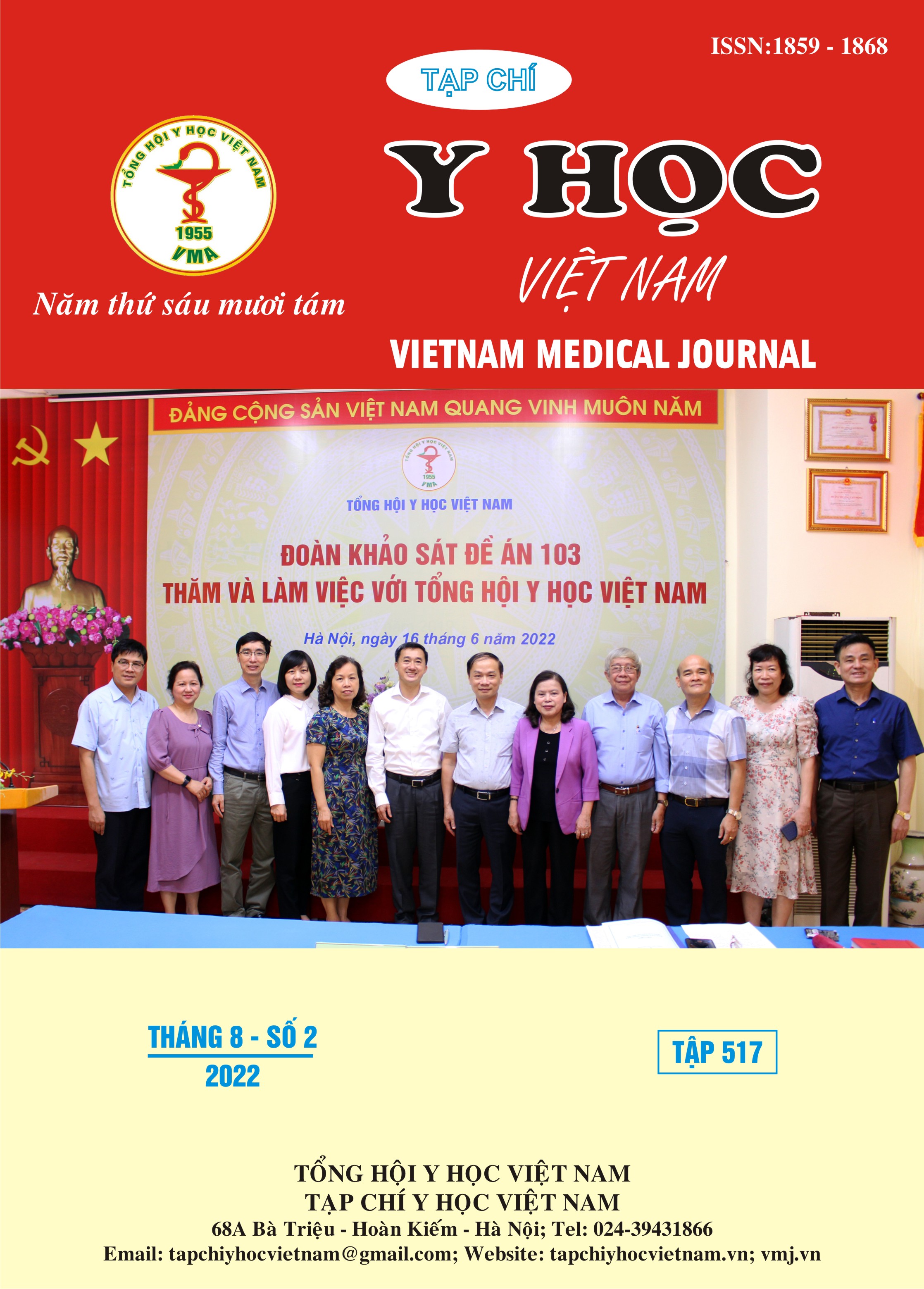THE RESULTS OF MECHANOCHEMICAL ENDOVENOUS OCCLUSION OF VARICOSE VEINS USING THE CLARIVEIN AT CHO RAY HOSPITAL
Main Article Content
Abstract
Background: In the last decade, minimally invasive endothermal (RFA, Laser) ablation techniques have replaced surgery for the treatment of superficial venous insufficiency to reduce postoperative complications and recovery time and to improve quality of life. To avoid the risks of nerve damage and need for tumescent anesthesia to improve patient comfort, an endovenous mechanochemical ablation (MOCA) has been introduced recently. Method: Retrospective descriptive study. Conclusion: A total of 28 patients with varicose veins were treated with ClariVein technique, an average age of 52 years, female accounted for 71.4%. Clinical grade according to CEAP from stage C2 to C5. The average intervention time was 25 minutes, the average volume of Sclerosant used was 8.5ml. The results after the intervention were technically successful at 100%, after 4 weeks, 27 cases were recorded (96.4%), and completely blocked by doppler ultrasound, the patient's clinical symptoms improved significantly, numbness and heaviness in the legs, 1 case (3.6%) had distal regurgitation. There were no notable complications such as deep vein thrombosis, sensory nerve damage in the lower legs, no skin necrosis or infection. There were only 2 cases (7.1%) of mild pain along the great saphenous vein, so no further treatment was needed, the patient was completely satisfied with the treatment result. Result: Mechanochemical ablation with the ClariVein system is safe and effective.
Article Details
Keywords
Varicose veins, ClariVein, MOCA
References
2. Siribumrungwong B, Noorit P, Wilasrusmee C, et al. A systematic review and meta-analysis of randomised controlled trials comparing endovenous ablation and surgical intervention in patients with varicose vein. Eur J Vasc Endovasc Surg 2012; 44: 214–223. [PubMed] [Google Scholar]
3. Sichlau MJ, Ryu RK. Cutaneous thermal injury after endovenous laser ablation of the great saphenous vein. J Vasc Interv Radiol 2004; 15: 865–867. [PubMed] [Google Scholar]
4. Van Den Bos RR, Neumann M, De Roos KP, et al. Endovenous laser ablation-induced complications: review of the literature and new cases. Dermatol Surg 2009; 35: 1206–1214. [PubMed] [Google Scholar]
5. van Eekeren RR, Boersma D, Elias S, et al. Endovenous mechanochemical ablation of great saphenous vein incompetence using the ClariVein device: a safety study. J Endovasc Ther 2011; 18: 328–334. [PubMed] [Google Scholar]
6. van Eekeren RR, Boersma D, Konijn V, et al. Postoperative pain and early quality of life after radiofrequency ablation and mechanochemical endovenous ablation of incompetent great saphenous veins. J Vasc Surg 2013; 57: 445–450. [PubMed] [Google Scholar]
7. Rasmussen LH, Lawaetz M, Bjoern L, et al. Randomized clinical trial comparing endovenous laser ablation, radiofrequency ablation, foam sclerotherapy and surgical stripping for great saphenous varicose veins. Br J Surg 2011; 98: 1079–1087. [PubMed] [Google Scholar]
8. Lam YL, Toonder IM, Wittens CH. Clarivein® mechano-chemical ablation an interim analysis of a randomized controlled trial dose-finding study. Phlebology 2015. 2016; 31: 170–176. [PubMed] [Google Scholar]
9. van Eekeren RR, Boersma D, Holewijn S, et al. Mechanochemical endovenous Ablation versus RADiOfrequeNcy Ablation in the treatment of primary great saphenous vein incompetence (MARADONA): study protocol for a randomized controlled trial. Trials 2014; 15: 121–121. [PMC free article] [PubMed] [Google Scholar]
10. TY Tang,1 JW Kam,2 and ME Gaunt3 ClariVein® – Early results from a large single-centre series of mechanochemical endovenous ablation for varicose veins. Phlebology. 2017 Feb; 32 (1): 6–12. [PMC free article] [PubMed] [Google Scholar]


